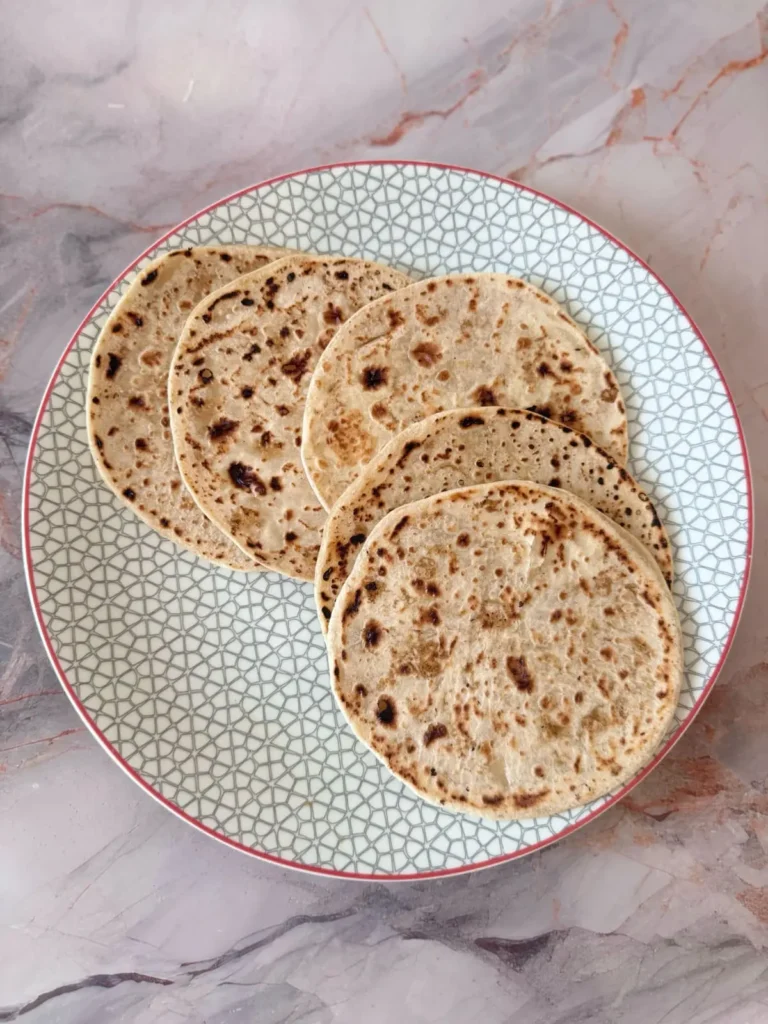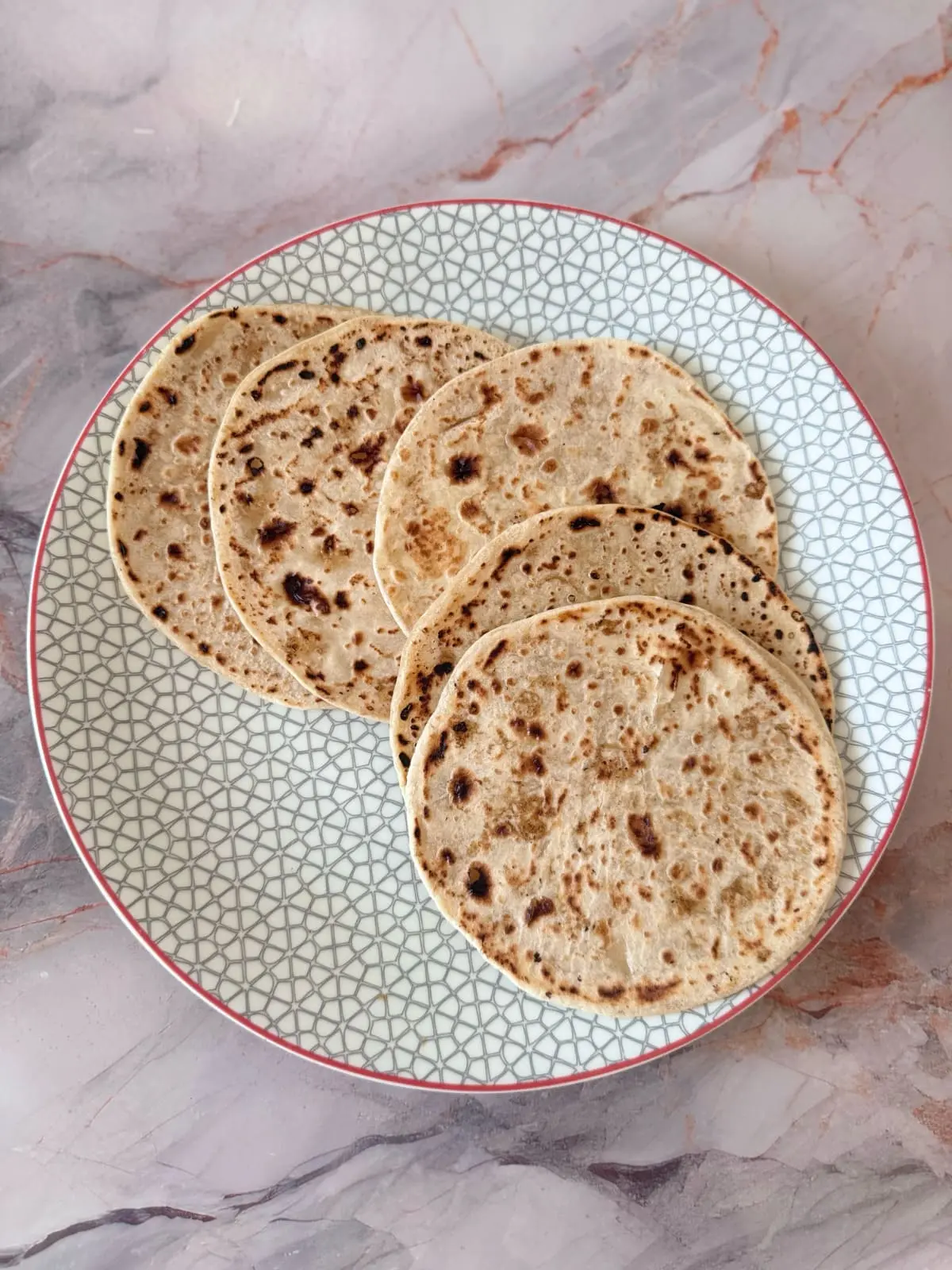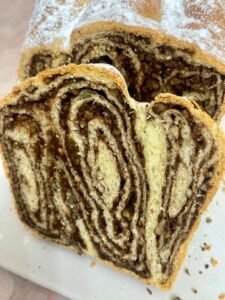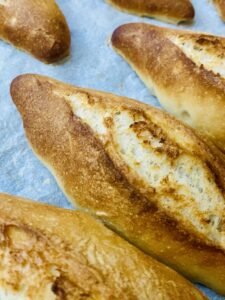This simple recipe for no-yeast flatbread produces soft, chewy homestyle unleavened bread that can be prepared in record time! Since you won’t be using yeast, you will skip the traditional dough rising time and have a flatbread in about 45 minutes. They’re perfect for the times when you crave flatbreads and don’t want to wait!

I’m so excited to share my go-to flatbread recipe without yeast! This recipe yields 8 delicious flatbreads, perfect for serving 4-5 people. You know, when you prepare yourself to make homemade pita bread and discover you’re completely out of yeast, but still really want that flatbread? If you’ve faced that moment, you know exactly what I’m talking about, and this recipe is your answer! It delivers warm, soft, and chewy bread without the wait!
If you don’t know the basics, read this article about what unleavened bread is and how it differs from leavened bread. If you want to know more types, read this article about the 11 types of unleavened bread.

These No Yeast Flatbread are:
- Convenient if you’re busy, tired, or out of yeast, but still need a quick flatbread that sits perfectly between a Bazlama and a Tortilla.
- Ready in less than 45 minutes
- Soft & chewy
- Not dense! You’ll be surprised that it’s not dense at all!
- Perfect as wraps, making them excellent for using as wraps for gyros, shawarma, or burritos, as they are not cracker-like.
5 Ingredients & Few Steps to Make Your Flatbread
This 5 ingredient unleavened flatbread—and this easy, 3 3-ingredient unleavened bread—are incredibly simple to make! If you’ve run out of yeast, set your worries aside. This Quick flatbread recipe is guaranteed to be soft and pliable, similar to my Turkish Bazlama.

You only need Flour, lukewarm liquid (Water & Milk), Olive oil, and Salt. The dough handles beautifully, and you won’t need any extra flour for rolling it out; and you certainly don’t have to worry about it tearing or cracking.
Here’s an overview of how to make this no-yeast flatbread dough:
- Mix half of the flour and the other ingredients together for 5 minutes using an electric mixer or a spoon and a mixing bowl.
- Add the rest of the flour and knead for another 5 minutes until the dough becomes a bit stiff but still workable.

When the dough is ready, divide it into 8 equal pieces. Arrange in a prepared baking tray. Cover with plastic wrap or a clean kitchen towel and let rest for 5 to 10 minutes.

Roll each ball into a round flatbread about 6 inches (15 cm) in diameter and about 0.1 inch (0.3 cm) thick.

Place the flatbread onto a hot pan or skillet and bake for about 45 seconds. You’ll know it’s ready to flip when it begins to bubble in places and you see dark brown spots underneath (check the photo below!).

Flip it and cook for another 45 seconds, or until the second side is also golden brown.
Success Tips
While the recipe card below includes all ingredients measurements in cups and spoons, I strongly recommend you to use a kitchen scale and a liquid measuring cup, if possible. More precise. More precise measurements mean more reliably delicious results—and that’s what we want!
Don’t skip preheating your skillet before adding flatbread dough. The intense, uniform heat is essential for preventing the dough from sticking to the pan and creating steam inside the dough quickly. A lukewarm or cold pan leads to a dense texture and makes the dough much more likely to stick to the surface.

More Flatbread Recipes
- Turkish Bazlama
- Black Pepper Focaccia
- Easy Unleavened Bread
- Nan-e Barbari Bread
- Gluten Free Communion Bread

No-Yeast Flatbread Recipe
Ingredients
- 3 cups (360 grams) all-purpose flour, plus more as needed
- ⅓ cup (75ml) lukewarm water, plus more as needed
- ⅓ cup (75ml) lukewarm whole milk
- 1 and ½ tablespoons (14 grams) olive oil
- 1 teaspoon (6 grams) sea salt
Instructions
- Make the dough: Add one and a half cups of flour (190 grams), olive oil, salt, and the lukewarm water and milk in the bowl of a stand mixer. Combine on low speed with a dough hook for 5 minutes until well combined. The dough is too wet and very sticky. That's ok! *If you don't have a stand mixer, you can do this in a large mixing bowl and in the next step, add the remaining flour and mix the dough with a silicone spatula or wooden spoon, then transfer the dough to a floured work surface and knead for 6-7 minutes. A hand mixer works for this step, but not for the kneading process.
- Add the rest of the flour and knead on low speed until the dough comes together, about 5-6 minutes. The dough should be a bit stiff and pliable, but still workable. It should stick to the dough hook, and all the flour should pull away from the sides of the bowl as it mixes! If the dough is too sticky to handle, gradually mix in flour, 1 tablespoon at a time. If it is too crumbly, gradually add water, 1 tablespoon at a time. Make sure you do not add too much extra water—you want a pliable, slightly stiff dough.
- Divide & shape: Divide the dough into 8 equal pieces. Just eyeball it—it doesn't need to be perfect! A bench scraper is always helpful for cutting dough. Use a kitchen scale. If you want them all to be equal in weight, each piece should weigh about 70 grams. Shape each piece into a smooth ball. Arrange in a prepared baking tray. Cover with plastic wrap or a clean kitchen towel and let rest for 5-10 minutes to make rolling easier.
- Take one piece at a time and keep the rest covered. Using a rolling pin, roll out each one into a round flatbread about 6 inches (15 cm) in diameter and about 0.1 inch (0.3 cm) thick. Arrange the rolled-out flatbreads on the counter and cover with a kitchen towel, plastic wrap, or parchment paper. If you’re using a skillet, you can roll out each piece and bake it immediately. But, if you intend to bake the flatbread in the oven, roll the dough out onto a square prepared parchment; this step will make it much easier to transfer it directly into the oven.
- Preheat a nonstick griddle or cast-iron skillet over medium-high heat. To check the heat, flick a droplet of water onto the pan; it’s ready when the water jumps, sizzles, and rolls into beads.
- Bake: When the pan is ready, place the flatbread on the hot pan and bake for about 45-60 seconds, until it starts bubbling up on the top and sees dark brown spots underneath. Flip it over with a slotted turner and bake for further 45-60 seconds, or until it is golden brown underneath. For a deeper golden brown color, bake for 15-30 more seconds. Your flatbread should puff up a little bit, but not as significantly as Turkish flatbread, since it is yeast-free. For the oven method: Place 2-3 flatbreads at a time on a preheated baking stone or baking sheet. Bake at 475°F (250°C) for about 5-6 minutes or until golden brown.
- Once baked, transfer the flatbread to a plate lined with a kitchen towel and cover it to trap the steam generated from the hot flatbread and make it much softer and more pliable. Repeat the process with all the other pieces of flatbread. Keep an eye on how they’re baking and adjust the heat as needed. Lightly grease your pan if you see a big dark color in your yeast free bread.




